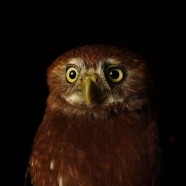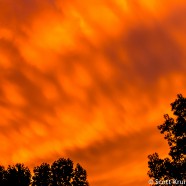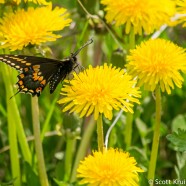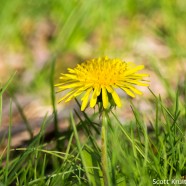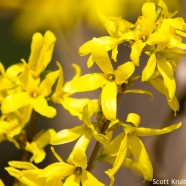Ferruginous Pygmy-Owl (Glaucidium ridgwayi)
Yesterday RTPI Affiliate Sean Graesser stumbled on his wonderful photo of this Ferruginous Pygmy-Owl (Glaucidium ridgwayi). He said it instantly brought him back to that night of achievement in Costa Rica. He and Tyler Christensen had been conducting a nightly owl census for over a month but had been unsuccessful in calling in one of these feisty owls. On their last net check of the night they found their first net empty, believing it to be another disappointing evening. When they shined their headlamps on the second net they saw little yellow feet kneading at the net against the pole, and...
Read MoreGnarly Sunset
I went outside to try to photograph some mammatus clouds a few days ago, with the evening sky revealing those dense pockets of descending cool air after a volatile day after severe thunderstorms and heavy rain showers. It did not go very well! The mammatus clouds to my east were a bit too spread out in distribution and too diffuse, not catching the light correctly for some reason. However, the light was funky to say the very least, with everything on the ground having these odd tones as the sun went below the horizon. This soon lit the cloudy skies to the west with fiery, gnarly tones which...
Read MoreBlack Swallowtail
After a long, cold and snowy winter it has taken a bit of time for the first Lepidoptera to start to emerge, but we are off! We will definitely be showing you more of the butterflies and moths we spot over the next several months. Here we have the Black Swallowtail (Papilio polyxenes) enjoying those “weeds”, also known as early season sources of nectar and pollen for our insects. Scott Kruitbosch Conservation & Outreach Coordinator
Read MoreDandy Dandelions
Come on, what’s wrong with the dandelion anyway? We call it a “weed” but it’s a pretty, tiny yellow flower. What could be so distasteful about that? These flowers end up as important early season nectaring and pollen plants for bees, a place for lepidoptera larvae to grow and feed, and our birds eat it. You can even eat this nutritious plant, too! Every bit. Not that you may want to unless you know what has been going in and on your lawn… Scott Kruitbosch Conservation & Outreach Coordinator
Read MoreForsythia in April
It may not be native, but this Forsythia certainly has a handsome shade of yellow, growing in size and almost luminescence every day in late April. At least many of our birds and some of our other wildlife use it often for cover and perching, but it really has no major use or importance otherwise in our area. Have you observed it being utilized by our native fauna? I honestly have no idea how to feel about plant species like this now. It is not going anywhere soon, but it is not causing nightmarish problems for our environment. If people like to feel spring and appreciate nature via its...
Read More



